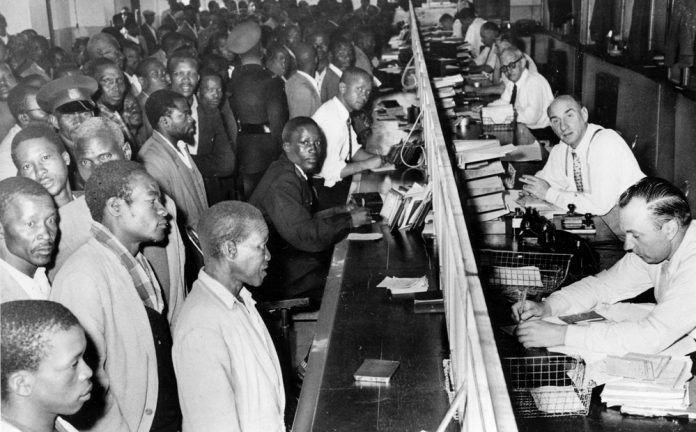The discovery of diamonds in the 1870s and gold in the 1880s quickly led to a monopoly in the mining, processing and selling of these minerals. DeBeers Consolidated Mines controlled the diamond monopoly while the gold monopoly was controlled by the Chamber of Mines. The United Kingdom was the dominant beneficiary of diamond and gold sales overseas.
After World War I, manufacturing became the fastest growing sector of the economy. Most of the growth was concentrated in the Witwatersrand, Johannesburg, Pretoria, Cape Town, East London, Port Elizabeth and Durban. The rural areas where most Africans lived remained largely underdeveloped. Skilled labor was imported from overseas and wages were higher in order to attract more people to this region. The unskilled labor was sourced from the rural areas and underpaid. The two tier pay system continued for a long time and the pay difference increased over time. The European workers were allowed to organize labor unions but Africans were excluded from these unions.
The South African government used Civilized Labor Policy as the basis for excluding Africans from certain jobs that paid more. These policies reserved certain jobs for Europeans regardless of their ability or qualification for the job. In 1935, the average wages paid to a European miner were 11 times the wages paid to an African miner and by 1960, European miners made 16 times more. White South Africans became wealthy on the backs of black South Africans. As a result, the standard of living for white South Africans in the 1960s was among the highest in the world. Not surprisingly, poverty rates among black South Africans remained very high.
Many black South Africans were forced to leave their homes to work on white owned farms and industries. It is estimated that in 1954, the average family income of black South Africans was 13 percent of what white workers made and African farm workers specifically made about 7 percent of income earned by white families. These inequalities in income persist even today. The average white family earns about 6 times more than the average black family.




